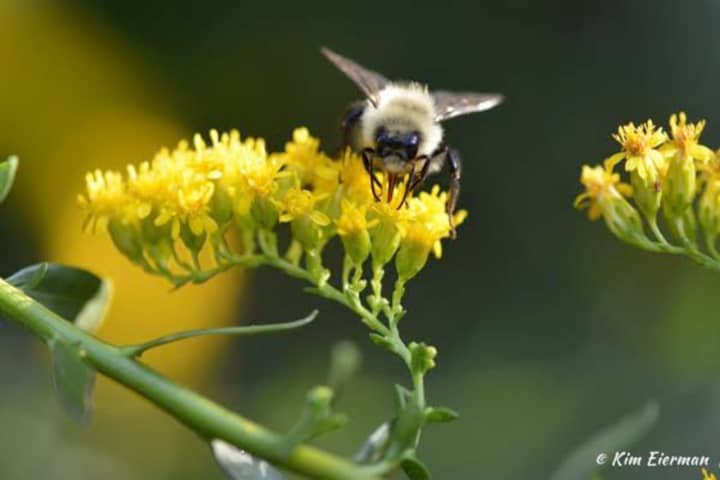As these pollinators search for late forage resources, they often find very little nectar or pollen in our landscapes. Why not offer a late season boost to hungry pollinators by adding some fall blooming native perennials to your landscape? You get to enjoy the flower show while being a pollinator steward!
Native Goldenrods
Ecologically-important, goldenrods have gotten a bad rap – blamed for fall allergies when annual ragweed is usually the culprit. Goldenrods (Solidago species) support an abundance of different species of pollinators, including native bees, honey bees, butterflies, beneficial wasps, and pollinating beetles. It’s hard to find a more valuable perennial in the late season garden.
Using goldenrods successfully requires an understanding of how a particular goldenrod species grows. Most goldenrods favor full sun, but there are some woodland goldenrods, like ZigZag Goldenrod (Solidago flexicaulis) and Blue-stemmed goldenrod (Solidao caesia), that prefer a part-shade to part-sun location.
Some goldenrods are “clumpers” and others are “runners.” For a landscape that has a great deal of weed pressure, a goldenrod with a more aggressive growth habit, like Tall Goldenrod (Solidago altissima) may be just what you need. For a more formal or tidier landscape, clumping goldenrods such as Showy Goldenrod (Solidago speciosa), Anise-scented Goldenrod (Solidago odora) or Gray Goldenrod (Solidao nemoralis) will be better choices.
Native Asters
Skip the annual garden mums, which have little to offer pollinators, and plant some perennial native asters for bees, butterflies and other pollinating insects. Asters have recently been reclassified and have some tortuous botanical names. One example is New York Aster which is now Symphyotrichum novi-belgii! Many resistant growers, nurseries and garden centers continue to use the old botanical names, so you may encounter both old and new names as you shop.
As with goldenrods, some asters prefer full sun, while others are happiest in a shadier location. White Wood Aster is one shade-lover that is native to our region. Often found in nature growing under trees, White Wood Aster, with its distinctive white petals surrounding yellow centers, is a tough plant for dry shade. A word of caution – all newly planted plants require proper watering to establish their roots – delivered either by you or Mother Nature.
Blue Wood Aster (Symphyotrichum cordifolium) is a great addition to the part-shade garden. As its name implies, the petals are bluish, encircling yellow centers. This aster will offer more prolific blooms if it receives a few hours of sun per day. Both Blue and White Wood Asters will “naturalize” in the garden, spreading gently over time.
For a sunny spot in your garden, consider New York Aster (Symphyotrichum novi-belgii), New England Aster (Symphyotrichum novae-angliae) or Smooth Aster (Symphyotrichum laeve). The first two plants thrive in full sun with moist soil, while Smooth Aster is more tolerant of drier soil. All of these asters sport flowers with purply-blue petals surrounding yellow centers. There are some cultivars (selections) of these plants that have different flower colors. But, bees love purple, blue, yellow and white, so why not offer them the colors they love?
Kim Eierman, a resident of Bronxville, is an environmental horticulturist and Founder of EcoBeneficial. When she is not speaking, writing, or consulting about ecological landscapes, she teaches at the New York Botanical Garden, Brooklyn Botanic Garden, The Native Plant Center and Rutgers Home Gardeners School.
Click here to follow Daily Voice Eastchester and receive free news updates.


